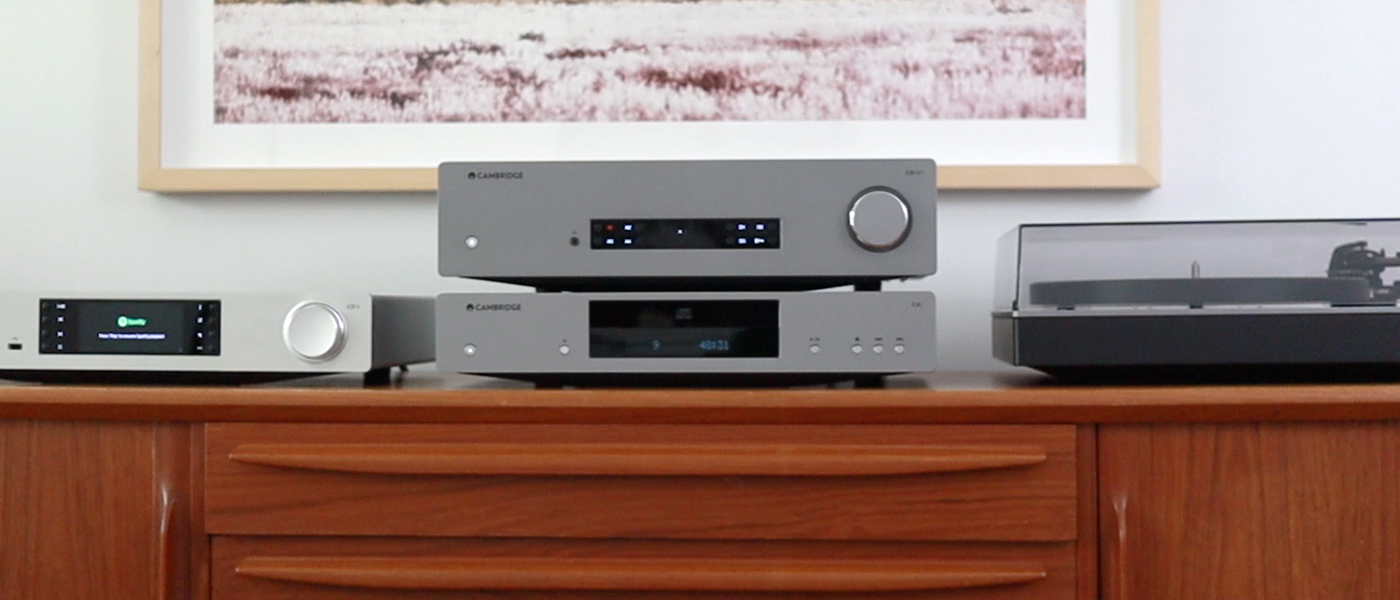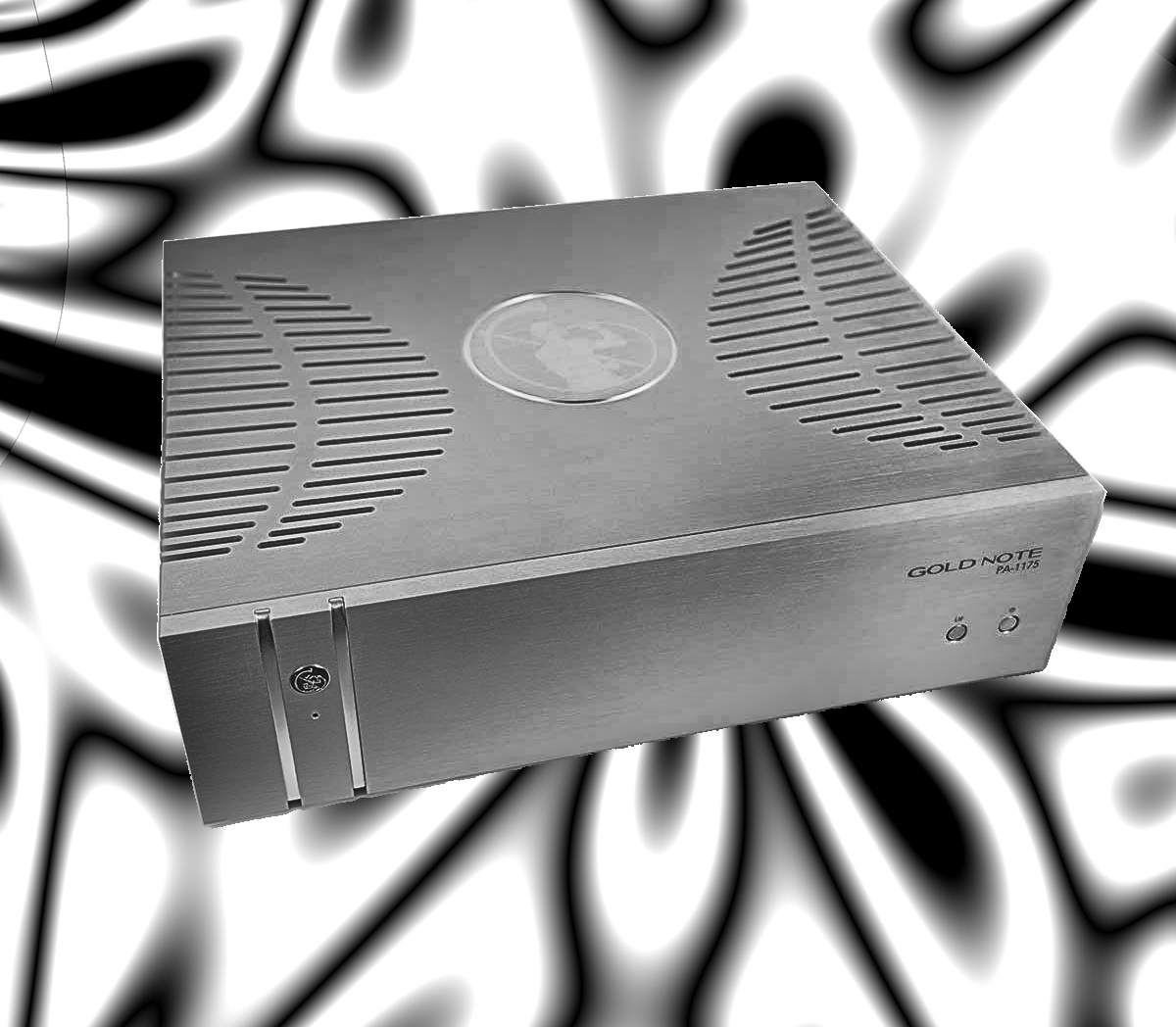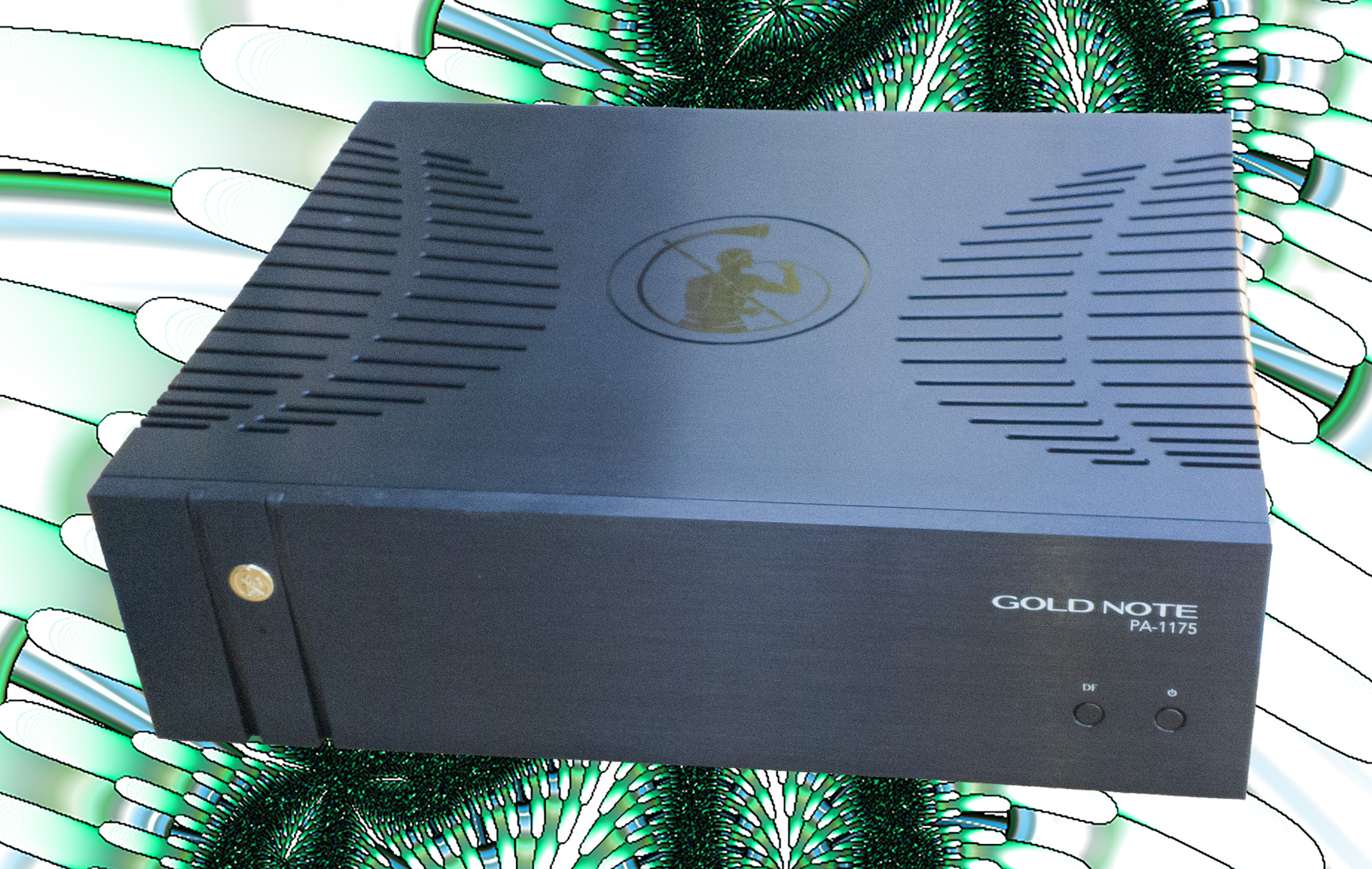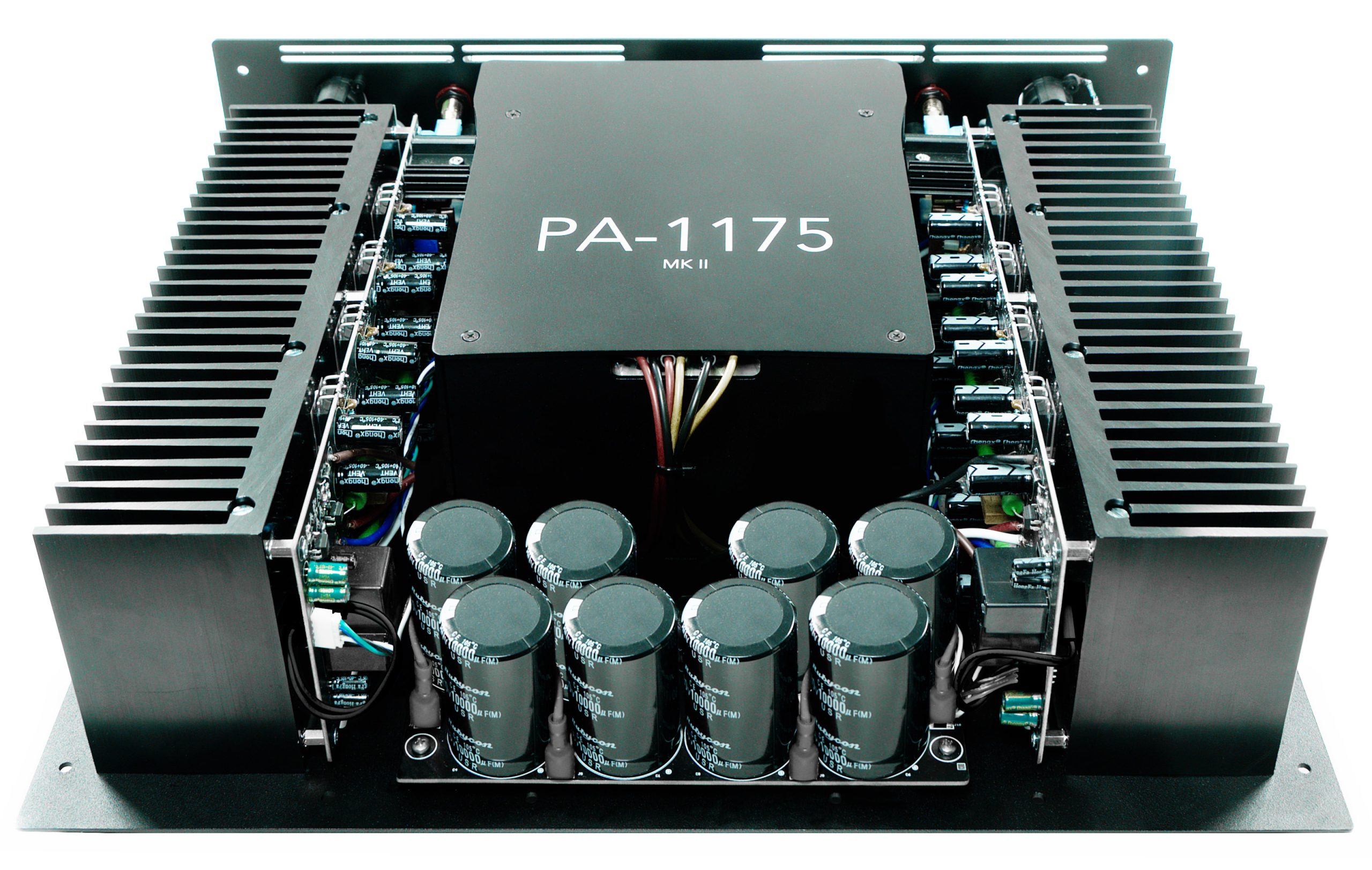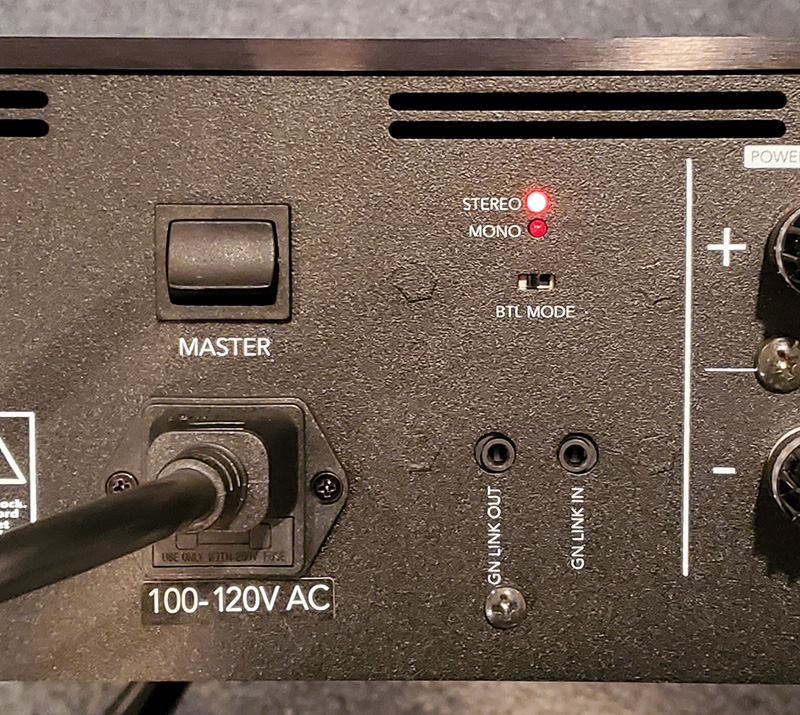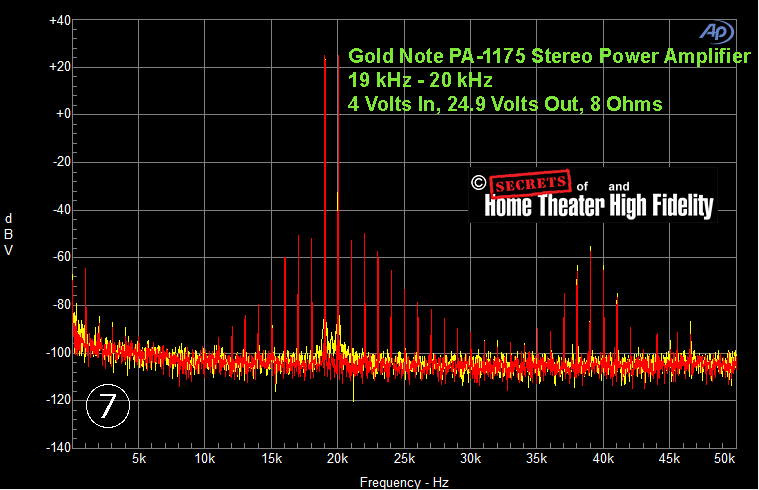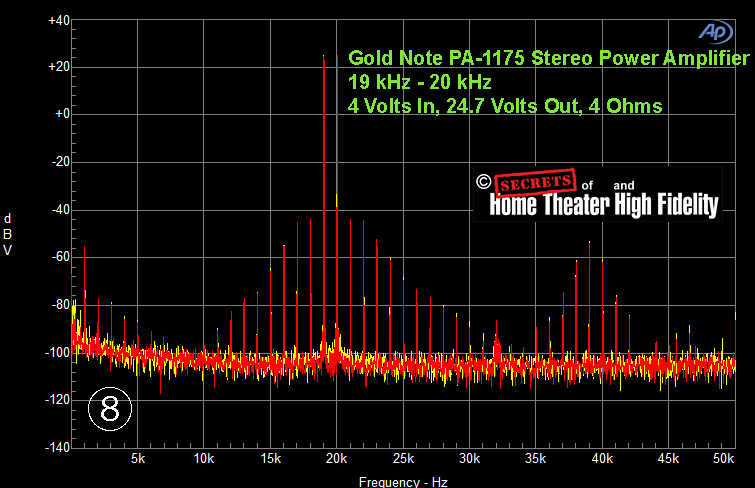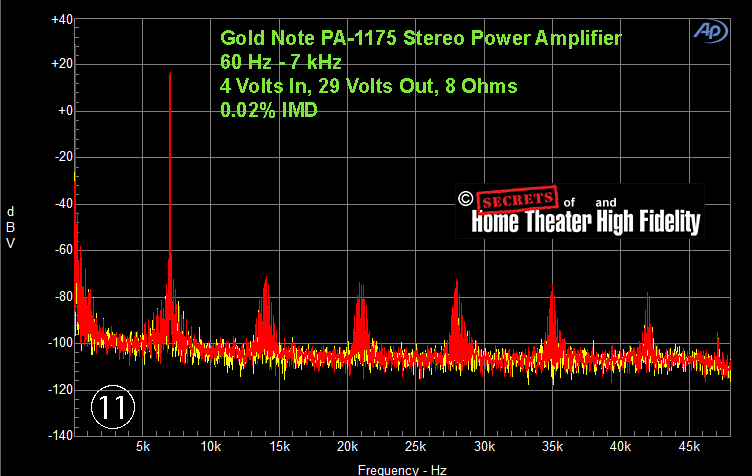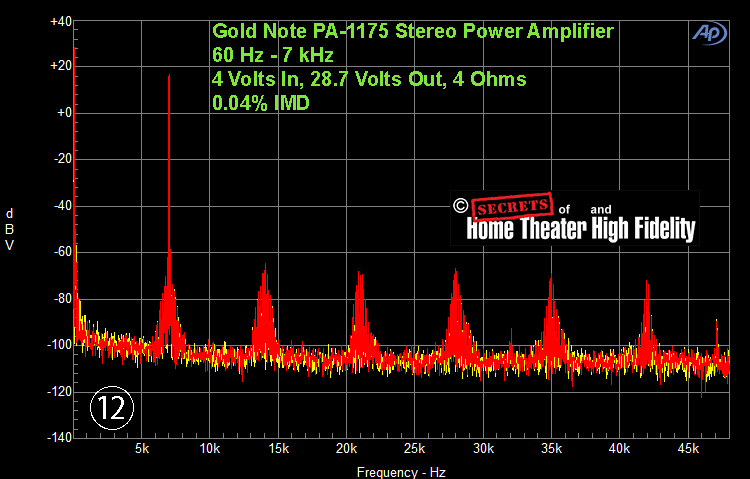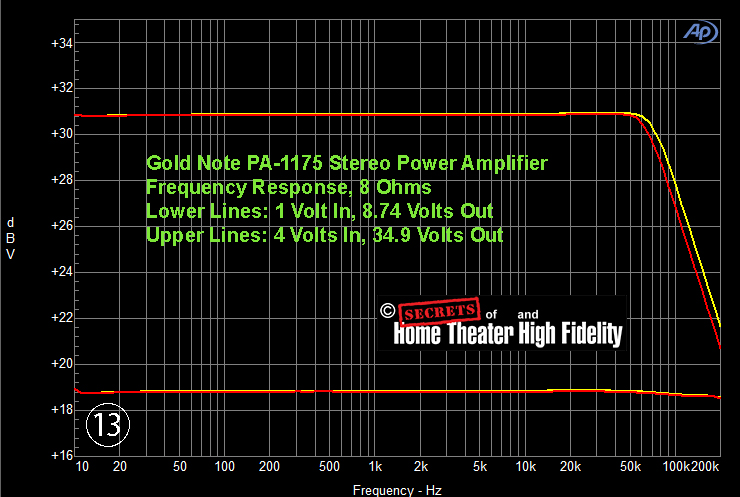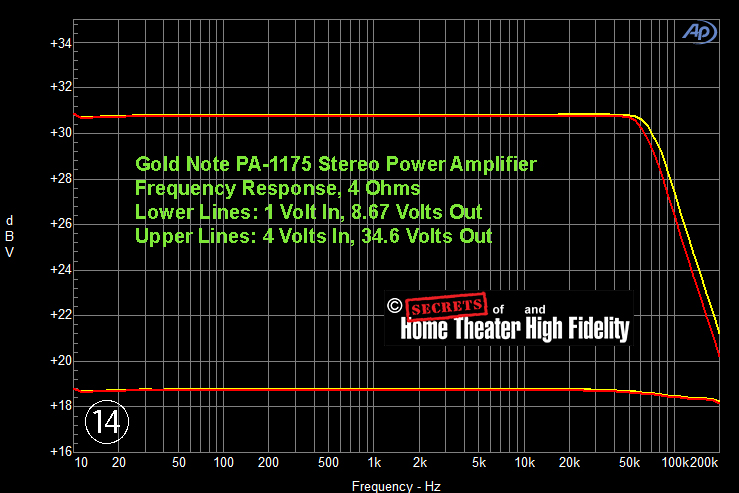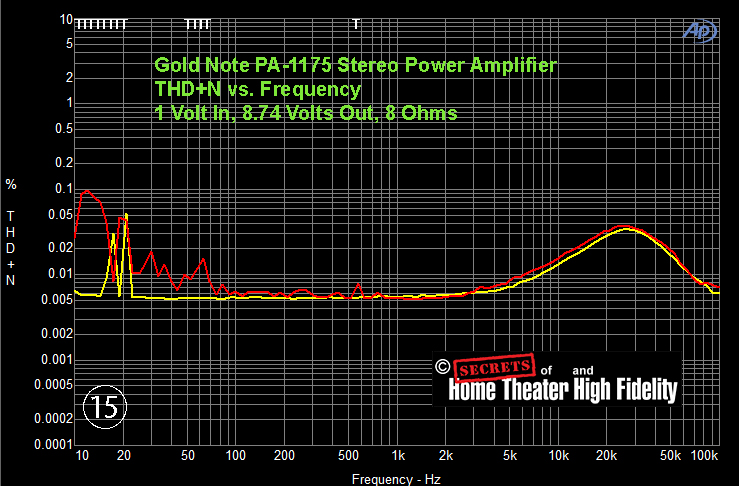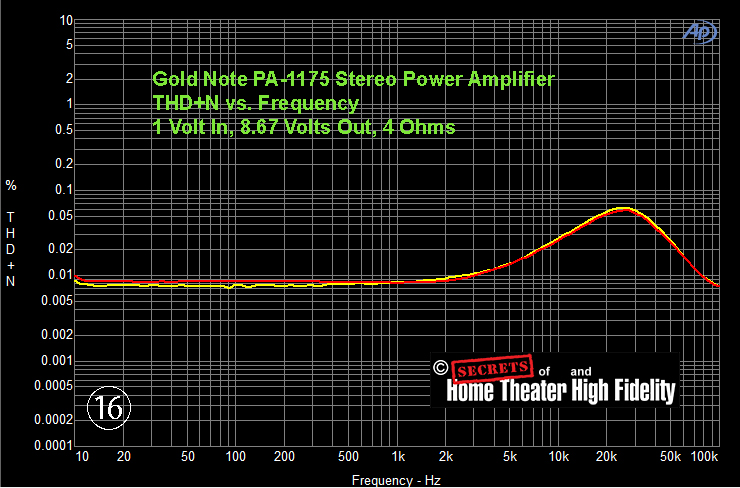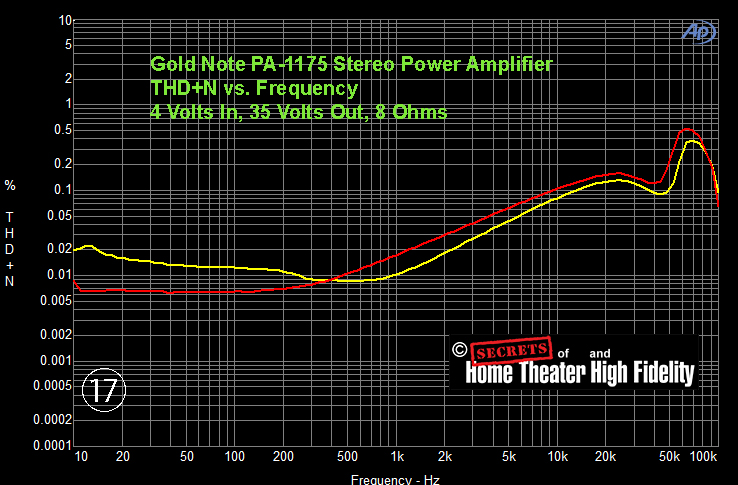Gold Note PA-1175 MkII Stereo Power Amplifier Highlights
- Solid build
- Excellent dynamics
- Italian styling
- Bridgeable to more powerful mono (520 Watts)
- Selectable damping factor: 250 or 25
- Optical bias
When our Editor, Carlo Lo Raso, visited three Italian high-end audio companies a few months ago, amplifier manufacturer, Gold Note, located in Florence, was on the list. After he returned to the USA, I asked him to have Gold Note send me their PA-1175 MkII stereo power amplifier for review.
It comes in silver, gold, and black. I got the black version, and here it is:
It has a very conservative look, with stylish heat sink vents on top instead of heat sinks sticking out on the sides. I felt it was (is) beautiful, but the best was yet to come.
Class:
A/B
Two channels
Power Output (per channel):
200 watts RMS into 8 Ohms
Input Sensitivity:
1 V RCA, 4 Volts XLR
Frequency Response:
1 Hz – 100 kHz ± 1 dB
THD+N:
0.01% @ 20 Hz – 20 kHz
Signal-to-Noise Ratio:
110 dB
Slew Rate:
20 Volts/µsec
Damping Factor:
Selectable 250 or 25
Dimensions:
430mm W | 135mm H | 370mm D
Weight:
20.5 kg
MSRP:
$8,199 USD
Company:
Website:
SECRETS Tags:
Amplifiers, amplifiers reviews 2023, italian, gold note, mkII, pa-1175, power amplifiers, stereo
Secrets Sponsor
The Gold Note PA-1175 MkII amplifier is biased as Class A/B. Optical bias is used to keep the voltage analysis separate from the signal path. EMI is reduced by using a steel chassis with aluminum panels. The heatsinks are inside the chassis with vents on the top surface.
The toroidal power transformer has a cut spiral nucleus to reduce mechanical vibration. A small secondary transformer powers other functions. The power supply contains a substantial 80,000 µF of capacitance.
One interesting feature on the PA-1175 MkII is its adjustable damping factor. A button on the front panel next to the on/off button selects between a factor of 250 and 25, with 250 being the default setting when the amplifier is turned on. A 250 damping factor gives the most (tightest) control over the bass, and that is what I used for listening and testing.
The rear panel has heavy binding posts as well as balanced XLR and unbalanced RCA input jacks. There is a small switch labeled BTL (Bridge-Tied Load) which allows the user to convert the amplifier into a bridged mono power amplifier that will deliver 520 Watts. Click on the photo below to see a large version where you can read the labels. You can see the BTL Mode switch just to the right of center with indicator LEDs above it that show the status (Stereo or Mono). If you set it to Mono, you would use the red binding posts on both channels for the mono output, connecting the minus banana plug (usually the black one) to the red post on the left side of the rear panel (marked “-” in the white square). You have to connect the bridged amplifier to the speaker correctly so that the output is in phase. There are trigger jacks just below the BTL Mode switch so you can use to turn on the amplifier when you turn on your preamplifier.
Here is a photo of the Stereo/Mono light with the Stereo light on:
I listened to the PA-1175 MkII using my computer’s lab grade sound card (Lynx E22) with Qobuz streaming service. The XLR outputs from the soundcard were connected to the XLR inputs on the PA-1175 MkII. Speakers included Opera Callas and Sonus faber Lilium.
My listening tests always include singers, violin, guitar (steel ad classical), orchestra, and piano. Oh yes, and my go to album Art Pepper Meets the Rhythm Section.
The Gold Note PA-1175 MkII is very neutral with good dynamics. The dynamics are courtesy of the 80,000 µF capacitance in the power supply. Voices, violins, and piano had a very natural characteristic. Art Pepper’s alto sax sounded just like an alto sax should sound.
Tito Pente’s xylophone has intense transients.
Alberto’s voice was perfect, but they should have used a real orchestra to back him up.
Steel guitar twang, excellent.
Venom by Amanda Stewart with a beautiful voice.
Yes, yes, I know, but the musical film score is very nice.
Ishida-gumi 2023 Summer, violin is an excellent test. Here, Vivaldi’s Four Seasons never sounded better.
Maurice Ravel and piano . . . beautiful.
Jazz . . . love the drummer’s cymbals.
I use this album all the time because I know what it is supposed to sound like. It sounded like it was supposed to sound like.
Secrets Sponsor
Unless otherwise specified, the yellow trace is the left channel, and the red trace is the right channel.
At 1 kHz, and 9 Volts out to 8 Ohms (Figure 1 below), THD+N was a very low 0.01%. This is about 9.5 Watts, which is within a normal listening level (estimated to range from 5 to 20 watts). The 2nd-ordered harmonic is the largest one, which gives the best (most enjoyable) sound quality.
The same test into 4 Ohms was about the same. The 2nd-ordered harmonic is, again, the largest one. The power output here is 18.7 Watts. Overall distortion plus noise is less than 0.01%, which is good.
With 35 Volts output into 8 Ohms (152 Watts), distortion still was less than 0.01%. This is the 80,000 µF capacitance talking.
At 4 Ohms, with (essentially) the same output voltage (Figure 4), THD+N was 0.03%. This stresses the power supply due to high current demand, and it is almost 300 Watts output. An excellent test result.
The 19 kHz – 20 kHz test with low voltage (Figure 5) into 8 Ohms, there are only three side-peaks, which is very good.
Low voltage into 4 Ohms shows four side-peaks, maybe five.
With a higher voltage output into 8 Ohms (Figure 7 below), more side-peaks are visible, but it is still OK. I have seen more side-peaks in some other power amplifiers.
About the same number of side-peaks into 4 Ohms, but they are slightly higher.
The 60 Hz – 7 kHz IMD test results are shown in the following four figures. First, 7.25 Volts into 8 Ohms. IMD was 0.01%. A good result.
About the same voltage into 4 Ohms, IMD was 0.02%.
Higher voltage into 8 Ohms, Figure 11 shows 0.02% IMD. This number is because the reference signal tone was much higher than with the lower voltage.
And, high voltage into 4 Ohms yielded 0.04% IMD. This is a pretty good result compared to some other power amplifiers.
The Frequency Response into 8 Ohms is shown below at two output voltages. You can see that at the higher voltage, the response is attenuated above 40 kHz.
The response is about the same into 4 Ohms. This is a good result, and is due to that excellent power supply.
THD+N vs. Frequency is shown in the following four figures. In the first one (Figure 15), with a low voltage output, the plot rises above 1 kHz and there is a hump at 25 kHz.
Into 4 Ohms, the hump is a bit higher, but still acceptable.
With a high voltage output into 8 Ohms (Figure 17) , distortion stays below 0.2% to 20 kHz.
Into 4 Ohms, THD+N is below 0.3% to 20 kHz.
Here are the plots for THD+N vs. Power Output. At 8 Ohms, the PA-1175 MkII delivers 200 watts at less than 0.02%. Clipping (1% THD+N) is at 230 Watts.
With a 4 Ohm load, output is 320 Watts at 0.03% THD+N. Clipping is at 360 Watts.
The Gold Note PA-1175 MkII Stereo Power Amplifier delivers low distortion at high output and is clean and neutral in sound. You can get stereo power amplifiers for less money, but the performance here is undisputed and the build quality is outstanding.
- Performs above specifications
- Very classy, modest industrial look
- Adjustable damping factor
- Damping factor indicator green and yellow so status is easier to see than between blue and green
- BTL switch a bit larger


